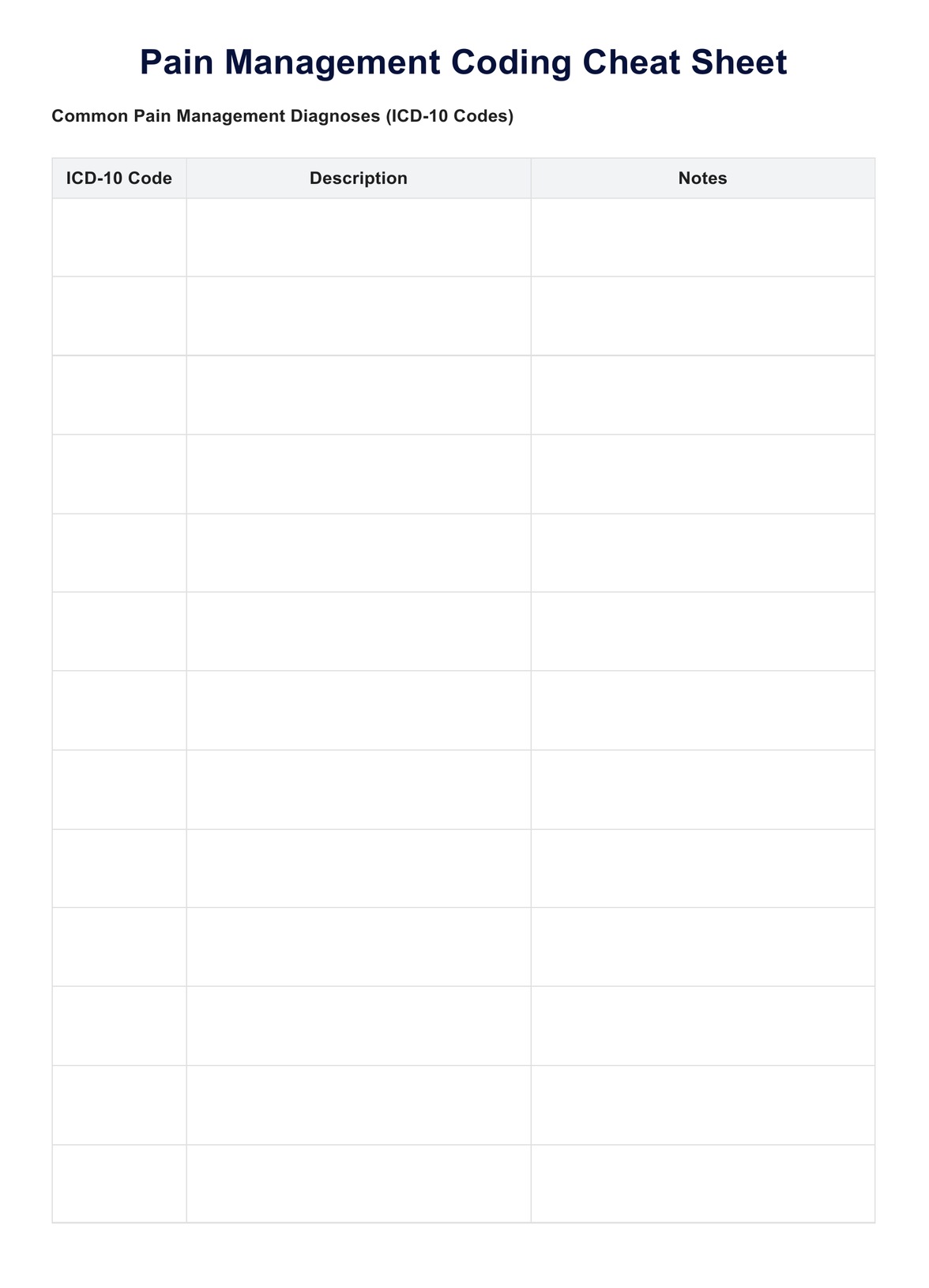Modifiers for chronic pain management codes are special codes added to Current Procedural Terminology (CPT) codes to provide additional information about the healthcare service, such as site-specificity, medication management, bilateral procedures, or services performed by more than one physician.

Pain Management Coding Cheat Sheet
Streamline your medical billing and coding for pain management with our comprehensive cheat sheet. Download our free PDF today.
Pain Management Coding Cheat Sheet Template
Commonly asked questions
A list of codes for pain management can be obtained from the American Medical Association's CPT code manual, specialty society guidelines, or online medical coding resources and databases.
Pain management coding involves selecting the appropriate CPT codes that describe the specific pain management procedures performed, such as injections, nerve blocks, or device implantations, and applying any relevant modifiers to reflect the services provided accurately.
EHR and practice management software
Get started for free
*No credit card required
Free
$0/usd
Unlimited clients
Telehealth
1GB of storage
Client portal text
Automated billing and online payments











